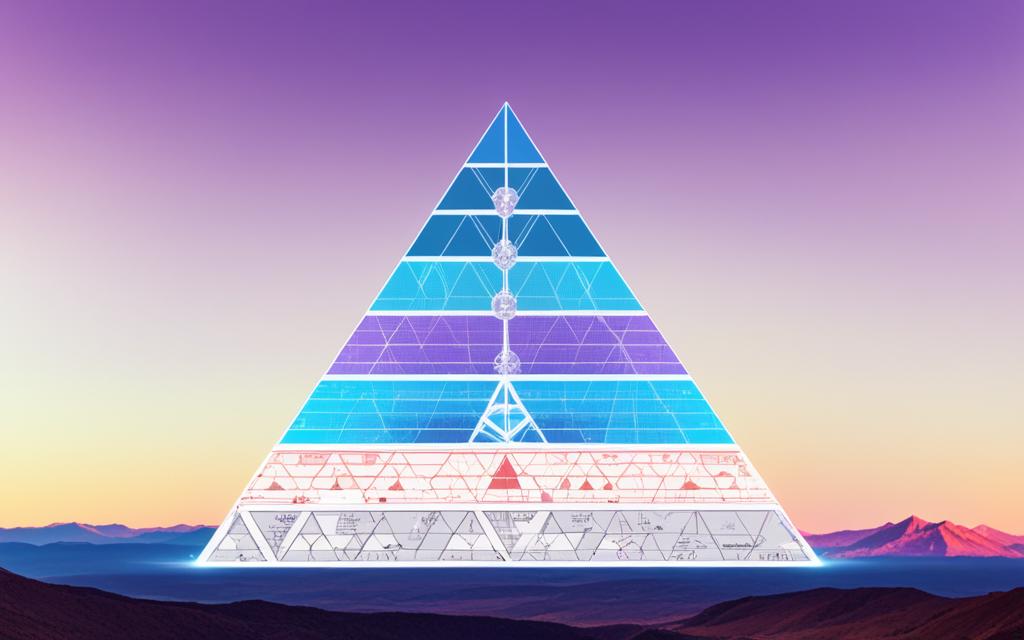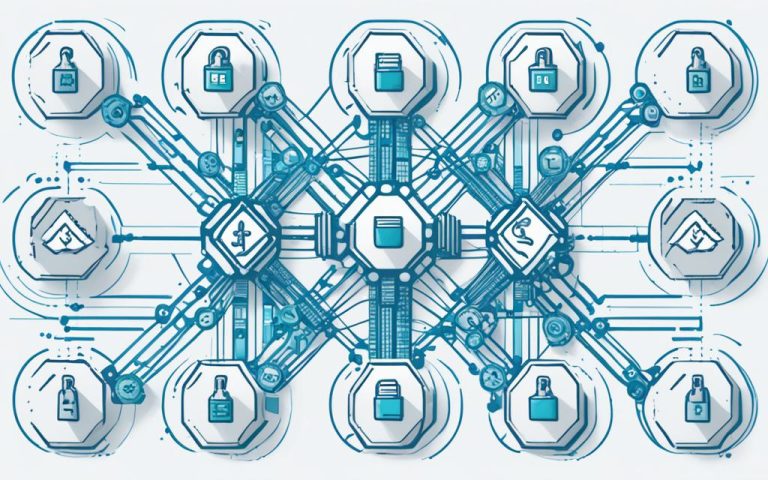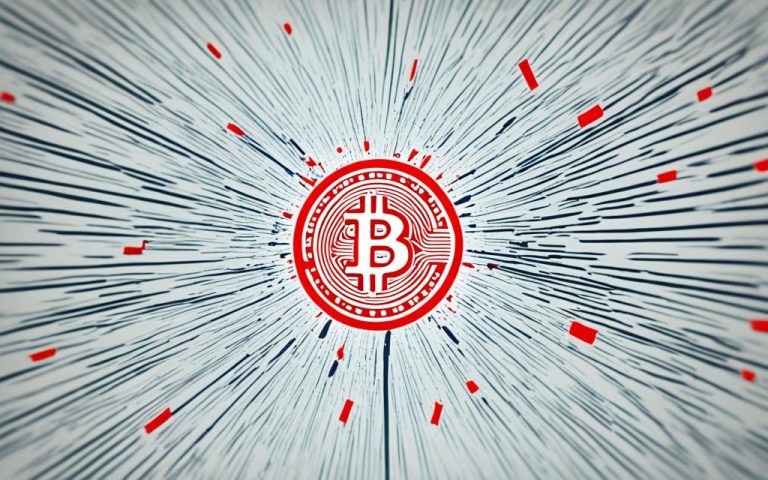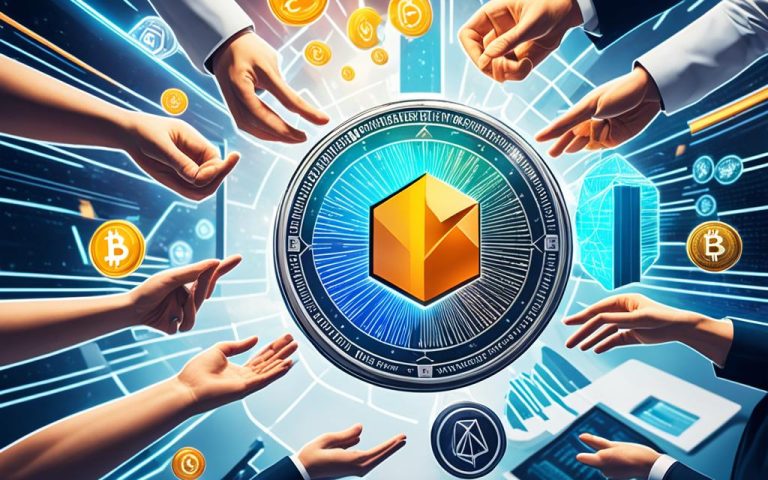Polygon was once called Matic Network. It’s a Layer-2 scaling fix for the Ethereum blockchain’s scalability problems. It offers tools and protocols for scalable dApps, focusing on performance, user experience, and security.
Layer 2 solutions like Polygon don’t depend on the Ethereum main chain for every transaction. They process and execute transactions off-chain using different methods.
Polygon has various Layer 2 solutions, such as state channels, plasma chains, and rollups. Each method aims to scale Ethereum. They work to increase transaction speed, cut costs, and make Ethereum more scalable.
Polygon enhances Ethereum’s capabilities without harming security or decentralization. It extends block space and uses cryptographic proofs to act as a powerful execution layer.
How Does Polygon Scale Ethereum?
Polygon is a Layer 2 solution that makes blockchain technology better. It makes Ethereum faster and cheaper to use by increasing blockspace. This means more transactions can happen at once without slowing down.
To scale up, Polygon uses several Layer 2 methods. These include state channels, plasma chains, and rollups. Each has its own way of working but all aim to improve transaction speed and cost.
State Channels
State channels let transactions happen off the Ethereum main chain. This makes transactions faster and cheaper. Only the start and end of transactions are recorded on Ethereum. This cuts down on congestion and fees.
Plasma Chains
Plasma chains are another tool Polygon uses. They batch transactions and update Ethereum periodically. This keeps the Ethereum network secure while handling more transactions.
Rollups
Rollups are a key part of Polygon’s technology. They use math to confirm transactions off the main chain. There are optimistic rollups and ZK rollups. They both speed up transactions but work in different ways.
Polygon uses state channels, plasma chains, and rollups to solve the blockchain trilemma. This trilemma is about balancing scalability, security, and decentralization. Thanks to Polygon, developers can create apps on Ethereum that are fast and cheap to use.
Over 80 Ethereum apps use Polygon to scale. Together, they’ve processed over 2 billion transactions with very low fees. Aave, a big finance app, has over $1 billion on Polygon. Games and NFT apps like Aavegotchi, Neon District, and Zed Run also use Polygon for a better experience.
| Polygon Scaling Solutions | Data |
|---|---|
| Polygon PoS Transactions | 2 billion |
| Polygon zkEVM Transactions | 5 million |
| Polygon zkEVM ZK Proofs | 600,000 |
| Polygon CDK | Interoperability and ZK-powered L2s |
Polygon is always working on new ways to scale Ethereum. It’s adding protocols like Polygon Miden too. These protocols make the network scalable, private, and interconnected. This helps the blockchain world grow.
To learn more about how Polygon scales Ethereum, check out these links:
- Polygon Blog: Layer 2 Demystified – How Polygon Scales
- Gemini Cryptopedia: What is Polygon (MATIC) – Crypto, Matic Network
- Crystal Intelligence: What is Polygon (MATIC)
Polygon’s Role in Ethereum Scaling
Polygon plays a key role in making Ethereum better. It offers many tools and networks to solve Ethereum’s growth problems. These solutions make transactions quicker and cheaper, improving how users experience it.
Polygon PoS is a main feature. It’s a plasma chain that handles billions of transactions with low fees. Validators help secure and speed up these transactions by working with the Ethereum main chain.
Then there’s Polygon zkEVM. It makes things easier for Ethereum developers by letting them use current tools and contracts. This ZK rollup processes millions of transactions. It keeps fees low, much like optimistic rollups do.
Polygon Miden focuses on privacy while supporting many transactions. It adds to what the Ethereum Virtual Machine (EVM) can do. This lets developers build complex apps that are tough to manage in ordinary systems.
The way these Polygon protocols work together is important. The Polygon CDK lets developers create their own ZK-powered Layer 2s. This toolkit is open source. It brings scalability, security, and the ability to work with other CDK chains.
Polygon is crucial for Ethereum’s growth. Its wide range of tools and networks tackle Ethereum’s expansion issues. It also makes cross-chain transactions almost instant without needing to go back to Ethereum. This boosts the network’s efficiency and ease of use.
FAQ
Is Polygon a Layer 2 solution?
Yes. Polygon is a Layer 2 scaling solution. It tackles the scalability challenges of the Ethereum blockchain.
How does Polygon scale Ethereum?
It increases Ethereum’s blockspace. Polygon uses state channels, plasma chains, and rollups for scalability.
What are the different types of Layer 2 solutions offered by Polygon?
State channels, plasma chains, and rollups are Polygon’s Layer 2 solutions. They boost Ethereum scalability.
How do state channels work?
State channels function off-chain. They have a smart contract on-chain. They use specific logic for transaction validation and dispute solving.
What are plasma chains?
Plasma chains send transaction summaries to the Ethereum main chain regularly. They offer more security than state channels.
What are rollups?
Rollups like optimistic and ZK rollups use cryptographic proofs. They ensure transaction validity on Layer 2, improving scalability and lowering costs.
What is Polygon PoS?
The original Polygon chain is Polygon PoS. Designed as a plasma chain, it processes billions of transactions. It has low fees.
What is Polygon zkEVM?
Polygon zkEVM is a ZK rollup equal to EVM. It supports existing tools and smart contracts. This offers a smooth experience for Ethereum developers.
What is Polygon Miden?
Polygon Miden focuses on a ZK rollup. It stresses privacy and high-throughput applications. It supports creating apps hard to make on usual account-based systems.
What is Polygon CDK?
The Polygon CDK is an open-source kit for chain development. It lets anyone deploy their ZK-powered Layer 2s. It offers scalability, security, and works well with other Polygon CDK chains.
Are Polygon protocols interoperable?
Indeed. Polygon’s protocols are made to work together. They allow fast cross-chain transactions without needing to go back to Ethereum.
What is Polygon’s role in the Ethereum scaling ecosystem?
Polygon focuses on scaling and innovation. It is a key player in scaling Ethereum. It offers tools and protocols to increase Ethereum’s scalability.



















